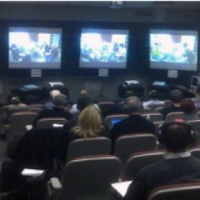Technology-enhanced trial presentations use cutting-edge software for courtroom impact.
Technology-enhanced trial presentations use cutting-edge software for courtroom impact.
Blog Article
Secret Techniques for Creating Memorable Test Discussions That Win Instances
In the lawful world, the distinction between winning and shedding typically hinges on the performance of trial discussions. The true art lies in striking a balance between rational argumentation and psychological allure, a dynamic that can emphatically persuade a jury's decision.

Using the Power of Storytelling in the Court Room
Why do some test discussions reverberate more strongly than others? In the courtroom, efficient narration transcends mere discussion of facts; it weaves these truths right into a compelling story that involves the court's emotions and intellect.

Making Use Of Visual Help to Boost Comprehending
Almost all reliable test discussions profit substantially from the critical usage of aesthetic aids. Graphes, representations, and various other graphical elements can transform complex lawful arguments into clear, understandable visuals, making them much more accessible to jurors who might not have lawful experience. By visually standing for information, such as timelines of events or connections in between parties, attorneys can create a more powerful impact and promote far better comprehension.

Integrating these visual components calls for cautious planning to guarantee they are legitimately permitted and morally presented, straightening with the general case strategy and appreciating courtroom rules. - trial presentations
Grasping the Art of Persuasive Communication
While visual help considerably enhance the clearness and influence of test presentations, similarly vital is the attorney's capability to involve in persuasive communication. This skill pivots on the careful articulation of debates and the strategic use of check this site out language to affect the court's understanding and decision-making process.
In addition, understanding influential interaction consists of the capability to read and reply to the jury's non-verbal hints. Attorneys have to be experienced at adjusting their delivery based upon the court's reactions, demonstrating empathy and authority as needed. This dynamic interaction often involves a nuanced equilibrium in between providing tough realities and weaving them into a coherent, convincing disagreement that aligns with the jurors' sense of justice and justness, thus assisting them in the direction of a desirable verdict.
Applying Effective Psychological Appeals
Emotional resonance is an effective tool in trial presentations, where the strategic use sob stories can greatly affect a court's reaction. Litigators have to judiciously integrate personal stories, expressive imagery, and compelling stories that associate straight to the lawful additional resources disagreements provided - trial presentations. This strategy not just humanizes the situation however additionally makes abstract legal principles more important link easily accessible and relatable to the jury
To carry out efficient sob stories, lawyers should concentrate on credibility and significance. Fabricated or extremely significant psychological schemes can backfire, bring about skepticism or distrust among jurors. Rather, genuine screens of feeling, grounded in accurate proof and witness statement, enhance trustworthiness. Moreover, recognizing the market and psychographic composition of the court help in tailoring sob stories that reverberate ideal with the audience's worths and experiences.

Conclusion
To conclude, winning test discussions depend upon the strategic blend of narration, visual aids, and persuasive interaction. By weaving a compelling narrative, deploying impactful visuals, and masterfully stabilizing psychological and rational allures, attorneys can considerably enhance juror engagement and understanding. This multifaceted strategy not just clears up complex lawful issues yet likewise fosters a deeper connection with the jury, therefore raising the probability of a positive decision.
Report this page